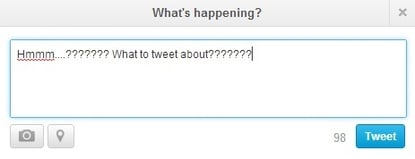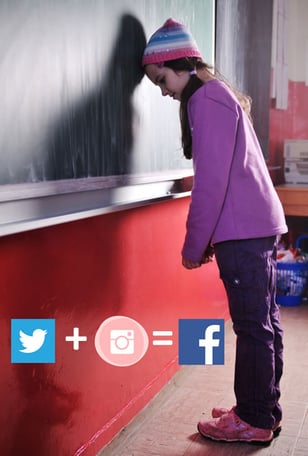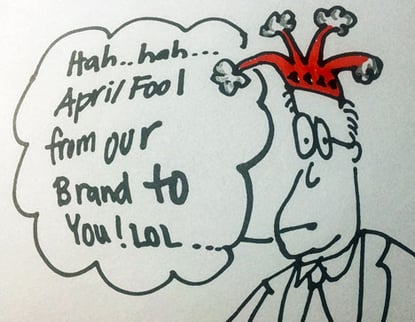It’s known among performers that on-stage gestures and emotions need to be bigger and broader than those in filmed performances. Because a stage performer’s face cannot be seen as closely as a film actor's can, bigger gestures help convey emotions which may be lost with subtle gestures. On film (and television) performances, viewers generally have a close view of a performer’s face in order to interpret the many emotional cues faces convey. If you buy the concept that less visibility to a performer’s face necessitates broader gestures to properly convey emotion, what does that say about communication and social networking when it comes to emotions?
In social networking, we're usually presented static, small facial images (or in many cases, not even faces, but brand logos or obscure pictures). Given limitations in being able to see facial emotions at all through social networks, how broad should social media "gestures" be to properly communicate emotion?
The answer - PRETTY BROAD!
![]() That’s probably why emoticons (and short-hands such as LOL) emerged as a means through typed characters to depict the unseen emotions on a communicator’s face. Emoticons can be subject to misinterpretation too, however, so they’re hardly foolproof.
That’s probably why emoticons (and short-hands such as LOL) emerged as a means through typed characters to depict the unseen emotions on a communicator’s face. Emoticons can be subject to misinterpretation too, however, so they’re hardly foolproof.
The implication for social network communicators is to approximate “broad” online gestures to communicate the emotion behind what's being said as best as possible. Beyond emoticons and LOLs, how do you do that? Here are a couple of thoughts:
- Try to be largely consistent in your emotional state – If you’re usually upbeat, try and stay with that emotion in your online communication. If you’re typically in rant mode, rant away with persistence. It's when you attempt to make sudden dramatic switches in emotion (i.e., a ranter suddenly becomes serious and reflective) that confusion occurs.
- Avoid subtle emotions whenever possible – Sarcasm and irony both depend on subtlety for effectiveness. Twitter doesn't do subtlety well, however, so use sarcasm, irony, and other less obvious tones VERY carefully and sparingly. They may play much better in a blog post than in a 140 character tweet.
- Don’t get locked into one medium – Short-form social media channels are rarely appropriate or effective for difficult conversations. Despite this, I’ve witnessed people use Twitter to publicly end romantic relationships, verbally attack one another, and question another’s ethics or morals. In each case, participants would have been so much wiser to drop it, get on the phone, or meet in person to hash these issues out.
These three practices can help, but there aren't necessarily pat answers when it comes to humor, even for professional communicators. Want proof? Ask comedian Gilbert Gottfried, whose attempts at humor after the Japanese earthquake and Tsunami, although completely consistent with his not very subtle sense of humor, got him fired as the voice of the Aflac duck. If you read the tweets and "heard" Gilbert Gottfried's voice in your mind, there was probably a different reaction than from simply reading the words contained in the tweets. But you can't depend on your audience to "hear" how you meant a tweet. So yes, even professionals blow it.
What are your thoughts about communicating emotions through social network channels? What do you do or have you seen done to try to more accurately communicate emotions? Or do you avoid sharing more emotional content because of the limitations? – Mike Brown
The Brainzooming Group helps make smart organizations more successful by rapidly expanding their strategic options and creating innovative plans they can efficiently implement. Email us at info@brainzooming.com or call us at 816-509-5320 to learn how we can help enhance your marketing strategy and implementation efforts.



